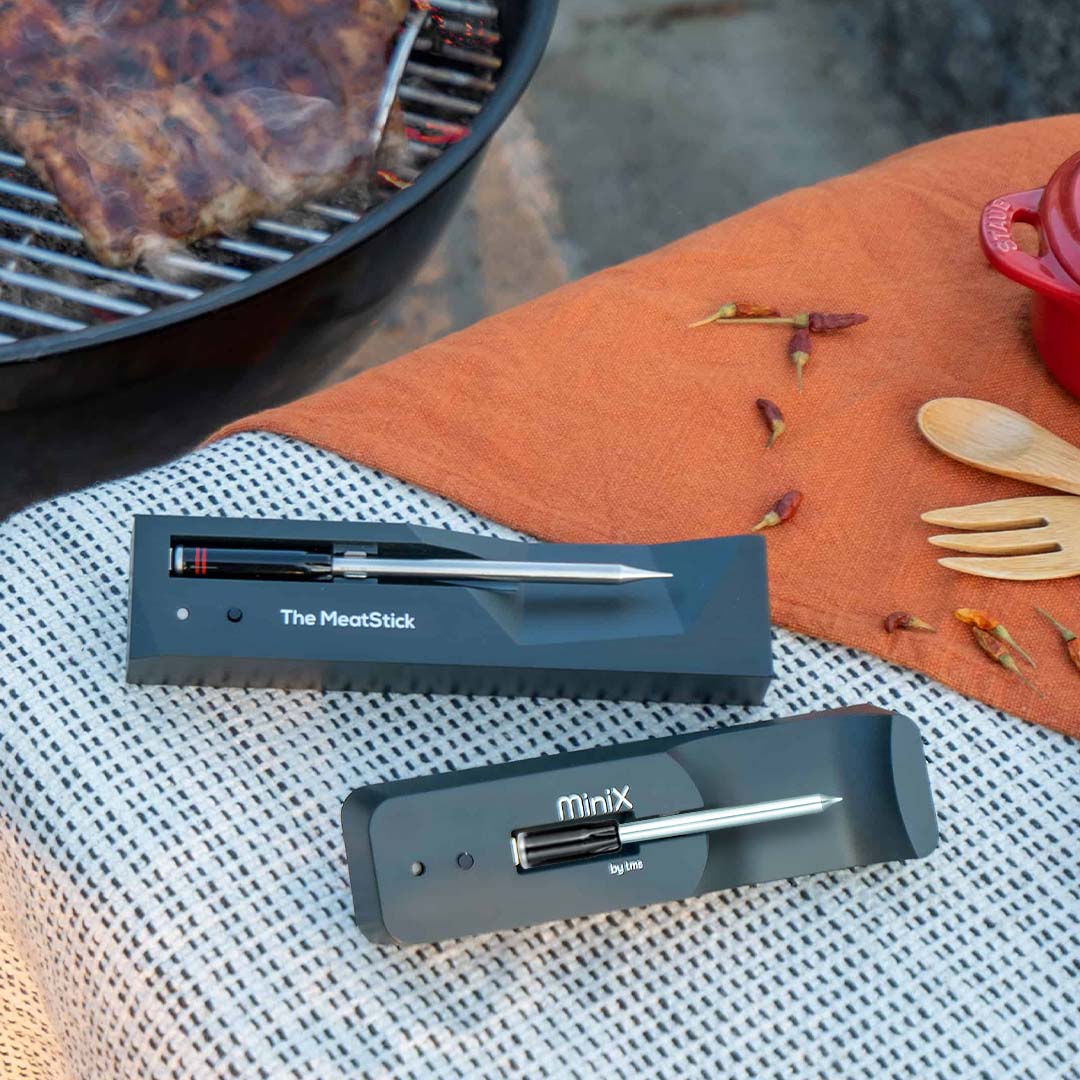
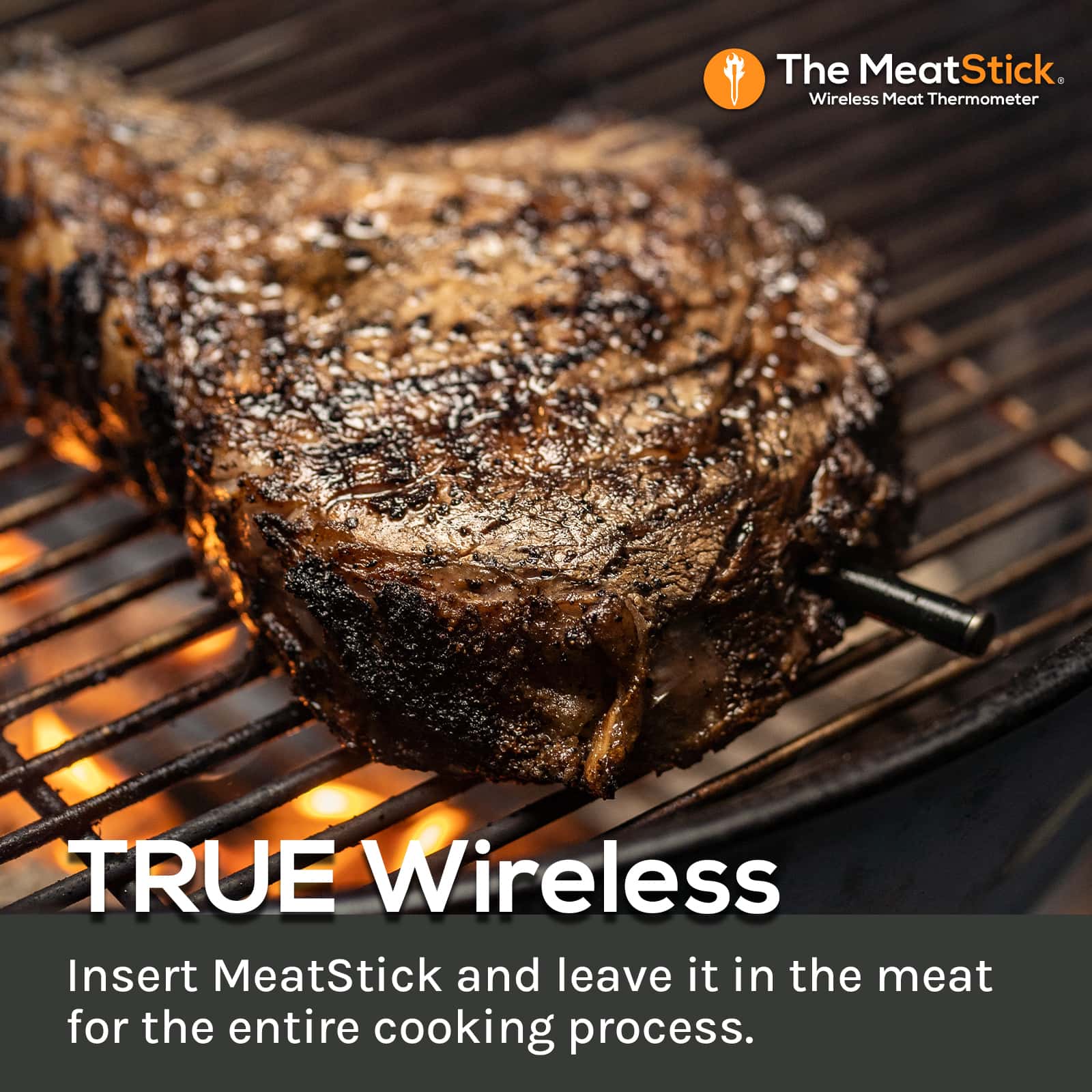
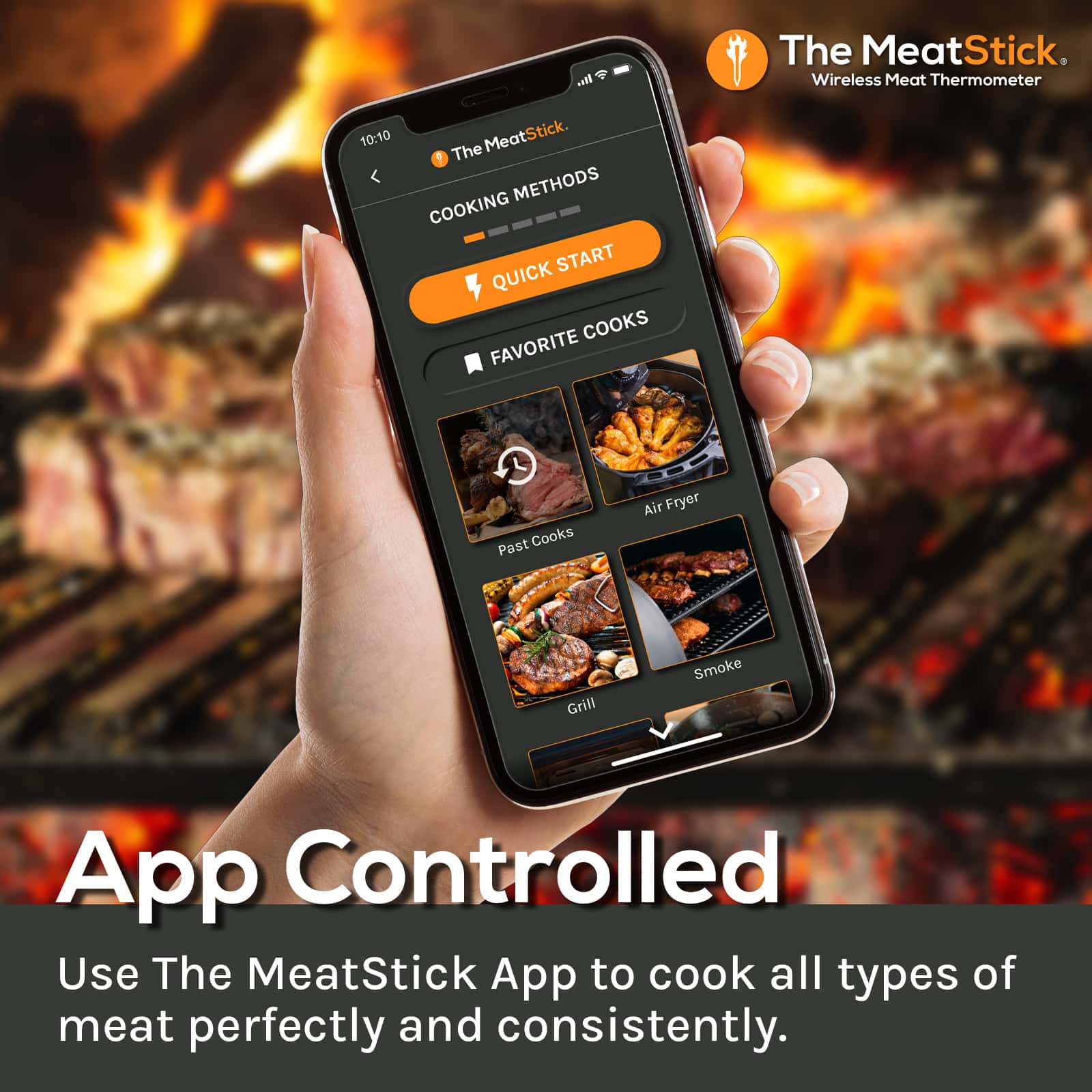
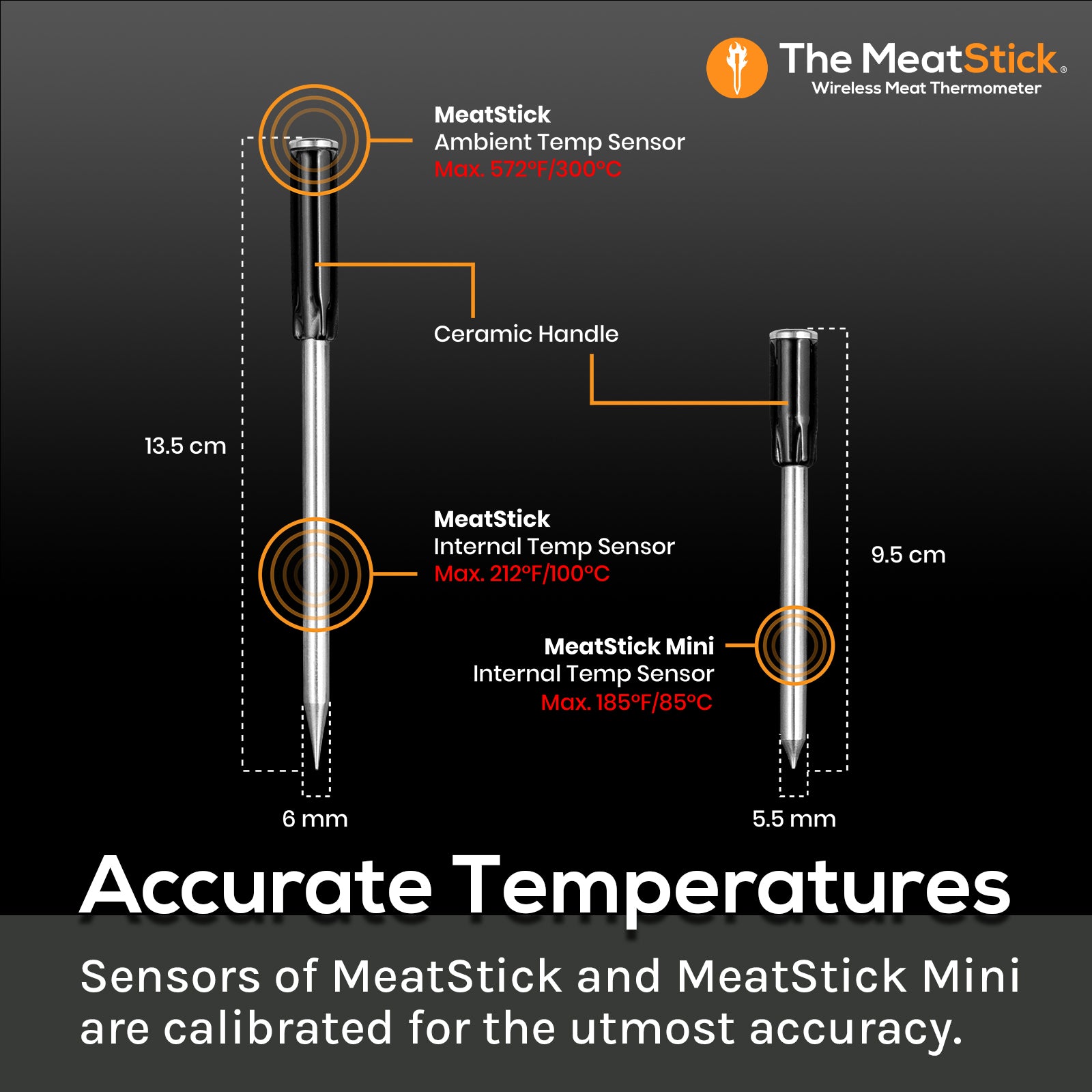
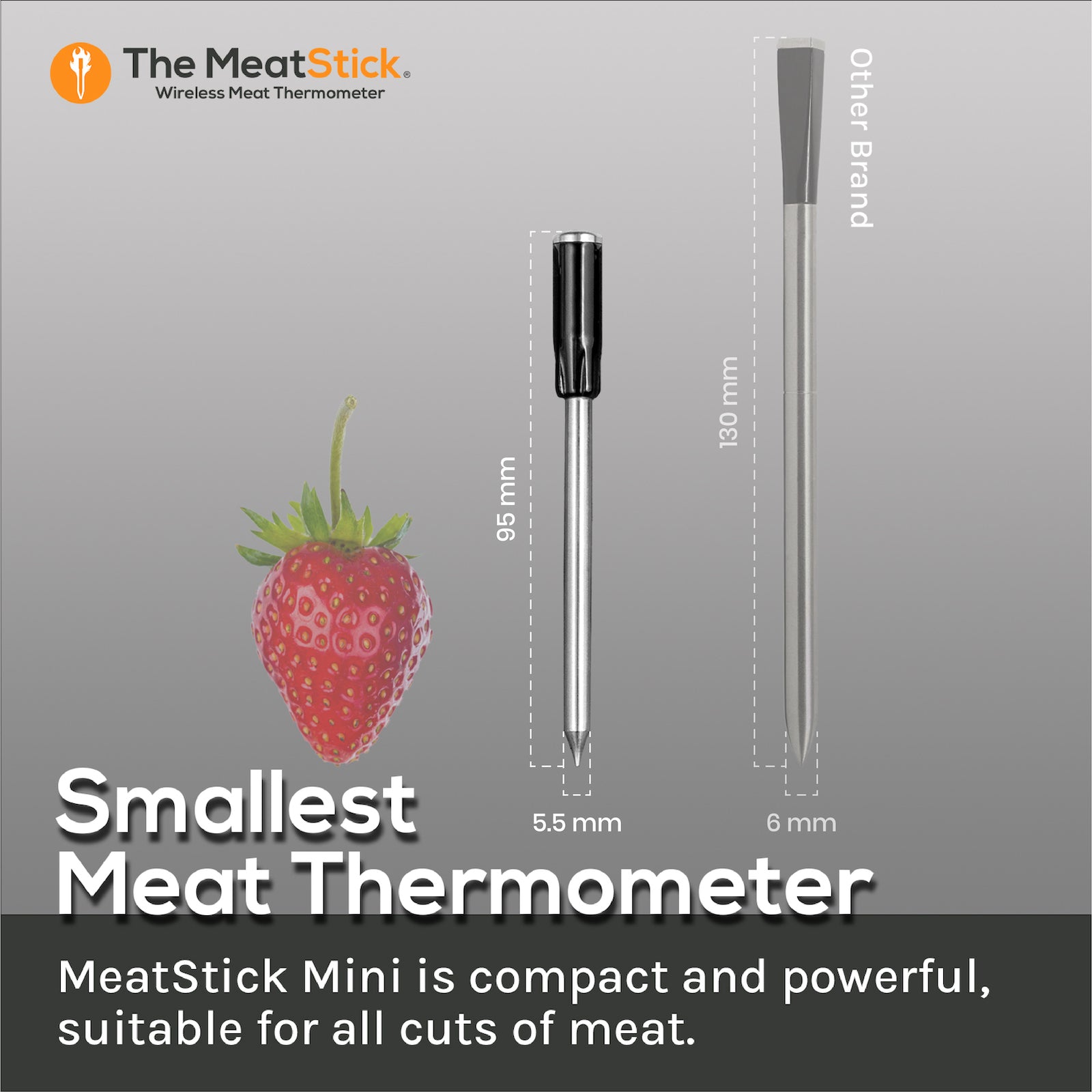
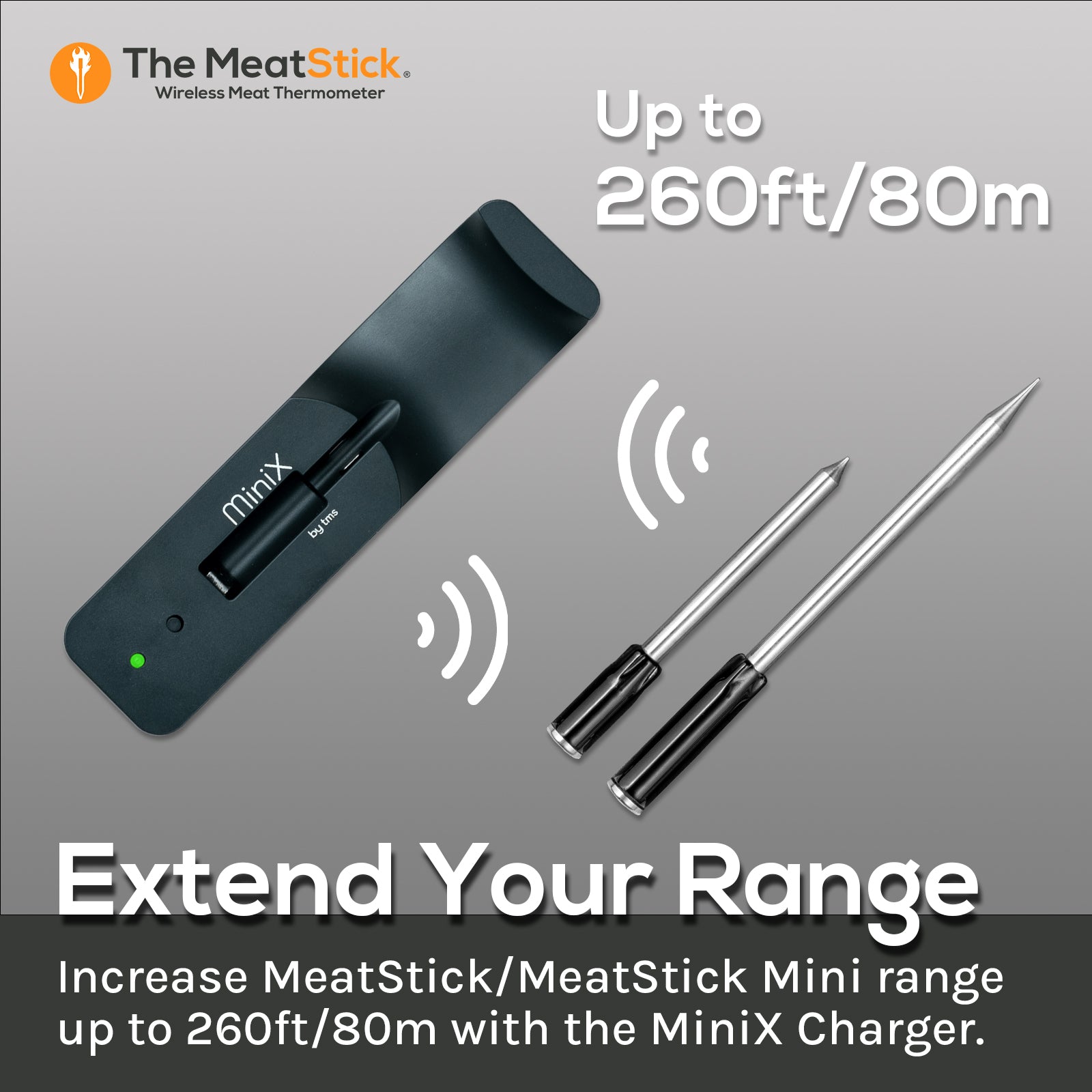
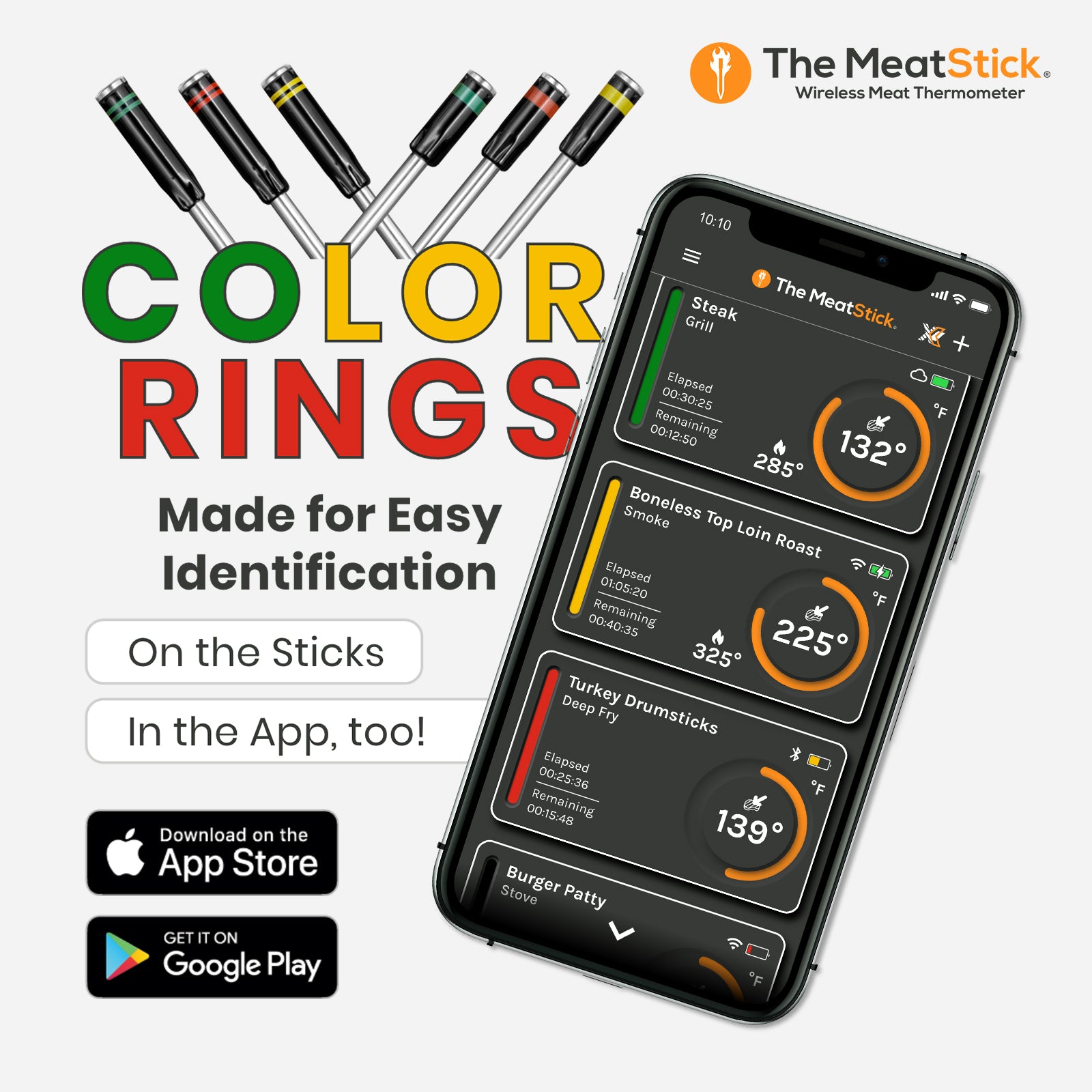
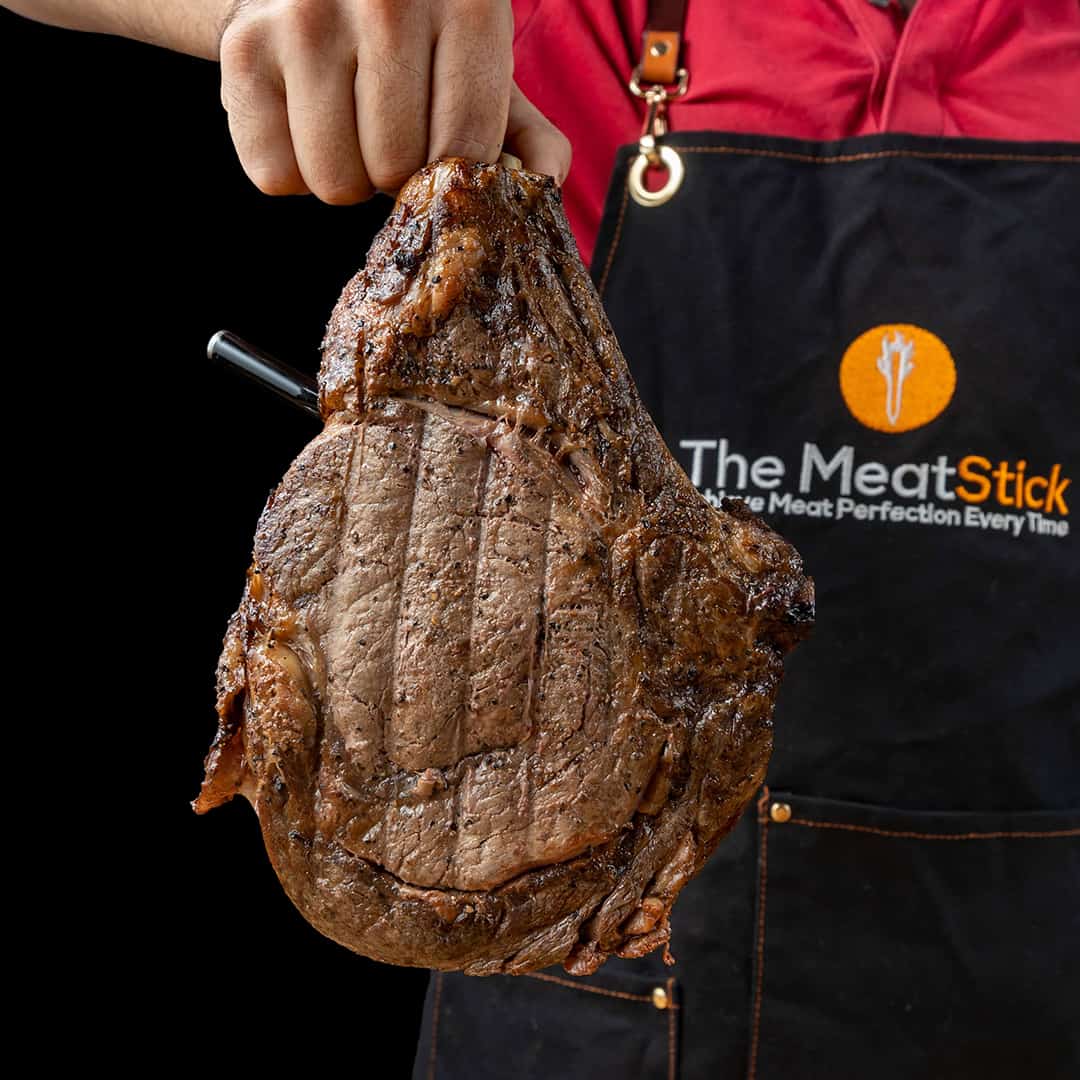




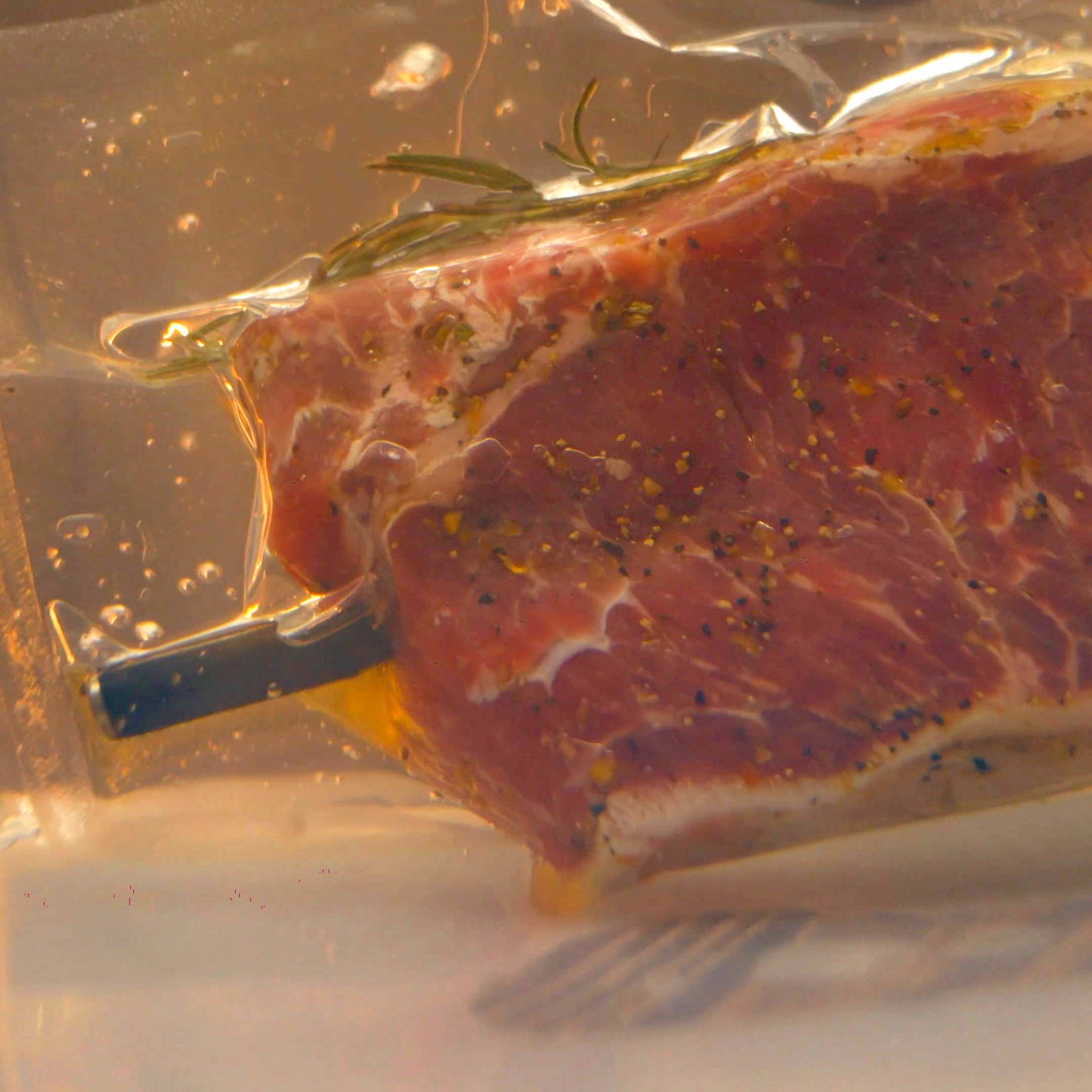
260 Ft Range / 2-Probe Package
FEATURES
🎁 What's in the Box?
MeatStick (Red) + Mini Stick (Black) + MeatStick Charger + MiniX Charger (Black or Blue) + Carrying Case Pro


HOW IT WORKS

1. Stick It In

2. Setup Cook

3. App Monitoring

4. Meat Perfection
Tech Specs

Durability
> Ceramic Handle | withstands up to 572°F
> Stainless Steel Probe | withstands up to 212°F (MeatStick) / 185°F (MiniStick)
> Deep-Fry, Sous-Vide & Dishwasher Safe
Performance
> Temperature Range: 32-212°F (MeatStick) / 32-185°F (Mini Stick)
> Ambient Temperature Range: 32-572°F
> Battery Life: 24 hrs+ (MeatStick) / 8 hrs+ (MiniStick)
Note: MeatStick Mini has no ambient temp sensor
Charger Specs
> Powered by 2 AA Batteries (not included)
> Magnetic Back for Easy Access
Stick Signal Range

Open Cook Setup
i.e. Open Grill
Up to 33 Ft
Enclosed Cook Setup
i.e. Closed Grill or Oven
Up to 6 Ft
Go The Distance
With Our MiniX Charger


Our MiniX Charger includes a built-in Xtender to extend the Stick’s Bluetooth range up to 100ft indoors or 260ft outdoors.
Any X Charger works perfectly with up to any 8 Sticks for range usability.
Buy BBQ & Kitchen BundleWhat's in the Box:
MeatStick Mini + MeatStick Charger +
MiniX Charger + Case
EXCLUSIVE BUNDLE DEALS































